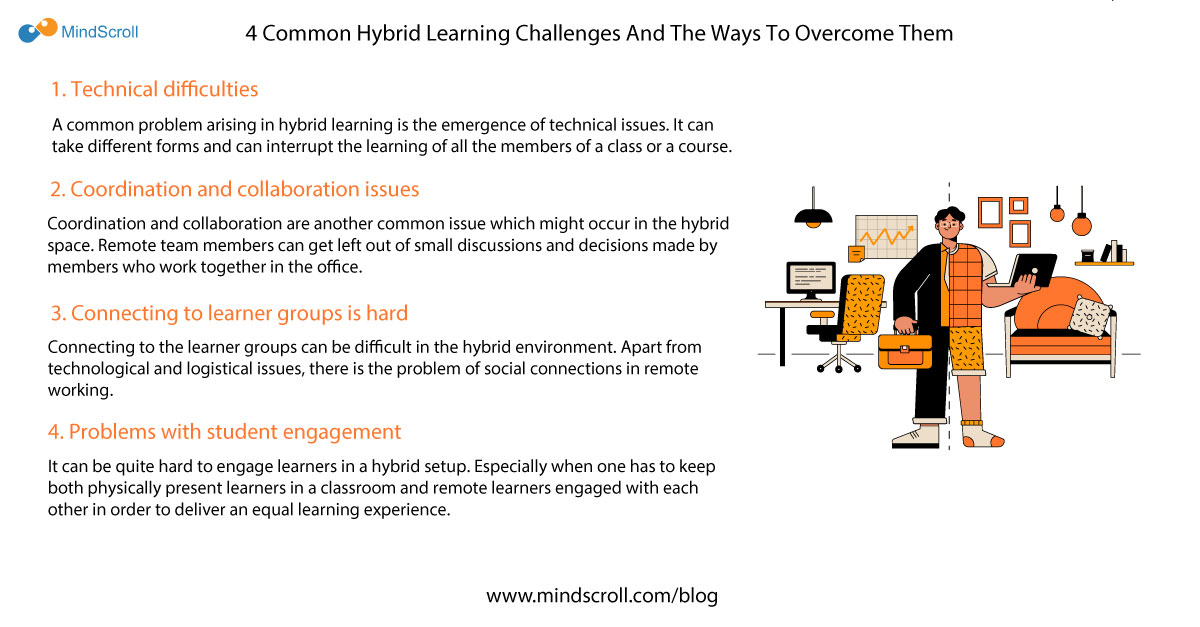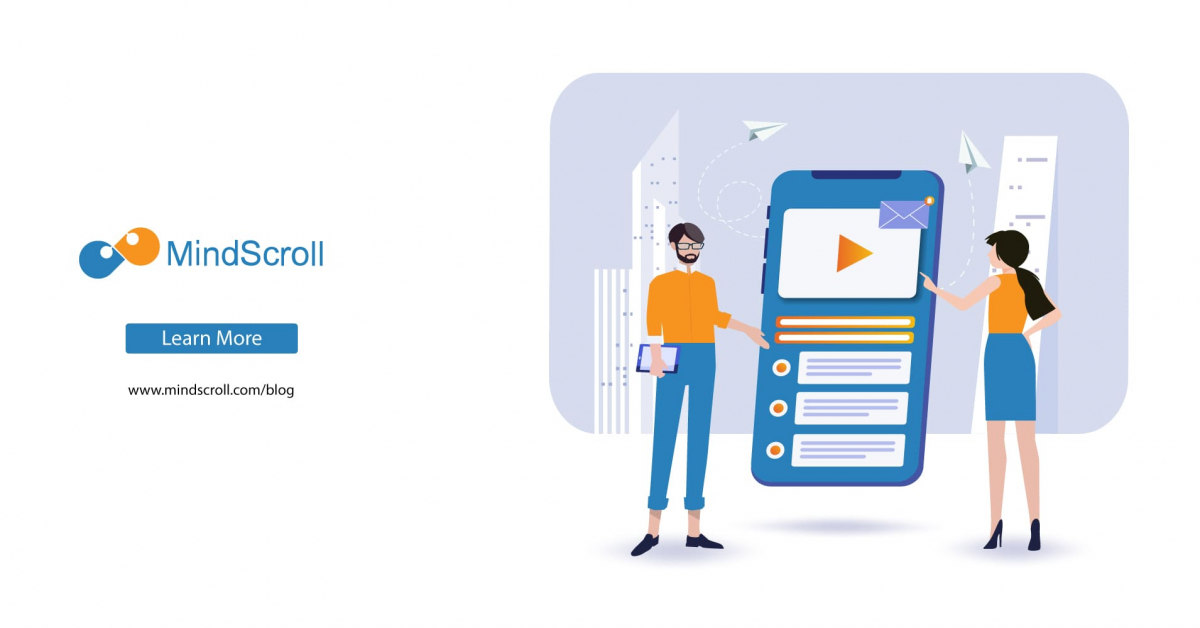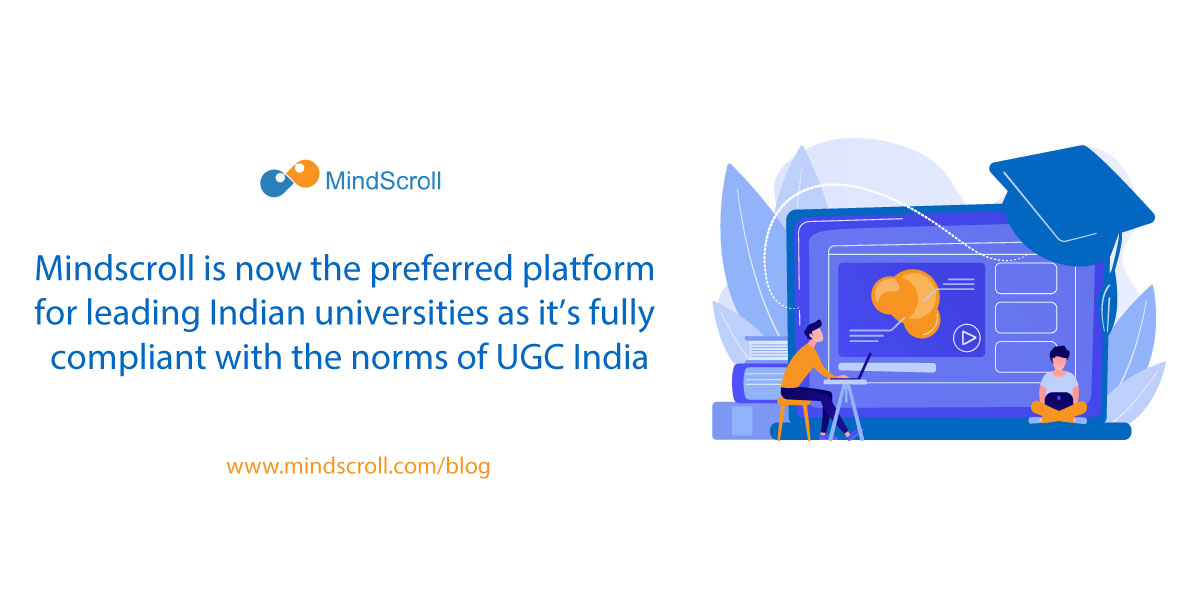Hybrid learning is defined as synchronous learning that combines in-person and remote learning simultaneously. Hybrid learning is helping in transforming the way training is delivered. Plus after the pandemic, it seems like the hybrid learning model is going to be the norm for a lot of organizations for many years to come.
While hybrid learning provides some excellent benefits, there are some challenges associated with which have to be understood and dealt with in order to reap its rewards. In this article, we will discuss in detail the 4 common hybrid learning challenges and the ways to overcome them so that a great learning experience can be delivered for both in-person and remote learners.
1. Technical difficulties
A common problem arising in hybrid learning is the emergence of technical issues. It can take different forms and can interrupt the learning of all the members of a class or a course. For instance, remote learners could face technical issues like sound problems, difficulties connecting to a live stream and inability to use softwares essential to the course. All of this could hamper their learning experience. Plus, in the hybrid setup, technology is also used within classrooms so technical issues experienced there could also disrupt lessons.
This is one challenge that is very difficult to overcome as technical issues can impact learners in different ways and at different times. For starters, training can be provided to trainers which deals with how to tackle such issues. Another method to lower disruption is to ask remote learners to connect to online courses a few minutes early. This would give them sufficient time to promptly deal with any technical issues and avoid disruption that might probably happen. Trainers could also record and upload courses so that any learner who experiences technical difficulties will still be able to catch up with the course at a later time.
2. Coordination and collaboration issues
Coordination and collaboration are another common issue which might occur in the hybrid space. This can happen as due to the efforts needed to coordinate with remote team members, they get left out of small discussions and decisions made by members who work together in the office. Over the period of time this results in the remote team members getting left out of bigger conversations and important decisions. Furthermore, collaboration is more tough to facilitate in remote settings as compared to traditional classrooms where learners can be easily put in groups.
This issue can be overcome by using digital whiteboard and screen sharing technology allowing the remote learners to easily take part in collaborative activities without separating in-person and remote learners. Moreover, synchronous communications methods like online chats can also be used to replicate the benefits of in-person interactions.
3. Connecting to learner groups is hard
Connecting to the learner groups can be difficult in the hybrid environment. Apart from technological and logistical issues, there is the problem of social connections in remote working. The hybrid setup creates a “dominant class” of employees who feel like they’re central to the organization and an “underclass” of employees who feel disconnected. This is an issue as professional networks and mentoring relationships are essential for advancing in the workplace. Further, social connections are crucial for our psychological well-being as well.
One way to overcome this would be to use activities to increase learner interaction and engagement. Trainer could encourage both learners in the classroom or at home to interact with each other by showing their work and progress on a common platform. Trainers could also mirror the screen of their online learners onto a larger screen in the classroom to give the learners physically present in the classroom a better sense of the remote learners.
4. Problems with student engagement
It can be quite hard to engage learners in a hybrid setup. Especially when one has to keep both physically present learners in a classroom and remote learners engaged with each other in order to deliver an equal learning experience. The methods used by trainers to enhance learner engagement in a classroom may not work with the hybrid setup. At the same time, efforts to boost remote learner engagement may result in the classroom becoming disengaged.
A way to overcome this problem is to focus on activities that can be applied to both learning methods. For instance, including activities such as quizzes and group classroom discussions and facilitating them through technology like live streaming and screen sharing. Trainers can also use their own presence in the classroom to watch out for the classic learner disengagement signs such as lack of eye contact and participation in activities, etc.
Final thoughts
Hybrid learning is a growing concept and has the potential to expand access to training while supporting various learning preferences. While there are some challenges, understanding them and their solutions is the answer to create new hybrid training experiences which are engaging, informative and easily accessible from anytime, anywhere.
Schedule a demo to know how you use MindScroll to kickstart your hybrid learning program. Learn more about MindScroll’s features here. If you have any queries, do contact us at yg@infonative.net.
Do you like this blog post? Do you know of any other common hybrid learning challenges and the ways to overcome them? Tell us your thoughts or share this blog post on our social media platforms below:
Facebook (@MindScroll) | Twitter (@mindscroll_lms) | LinkedIn (@MindScroll) | Instagram (@mindscroll_lms)
Check our blog for resources you and your team may need.
Read next: Top 5 Technologies That Are Transforming The eLearning Industry




